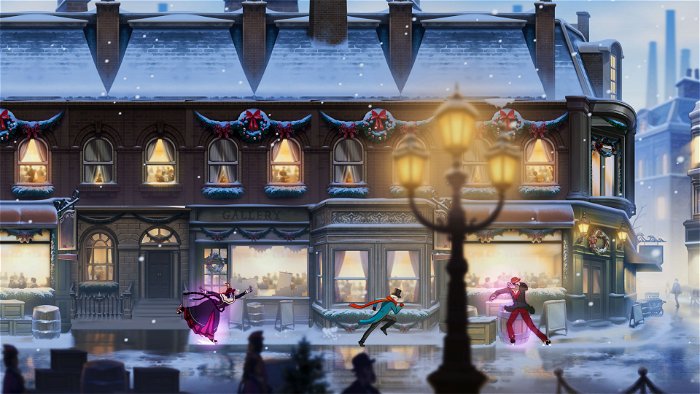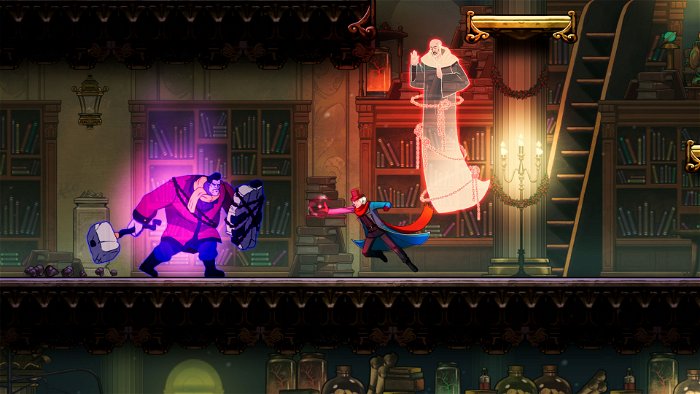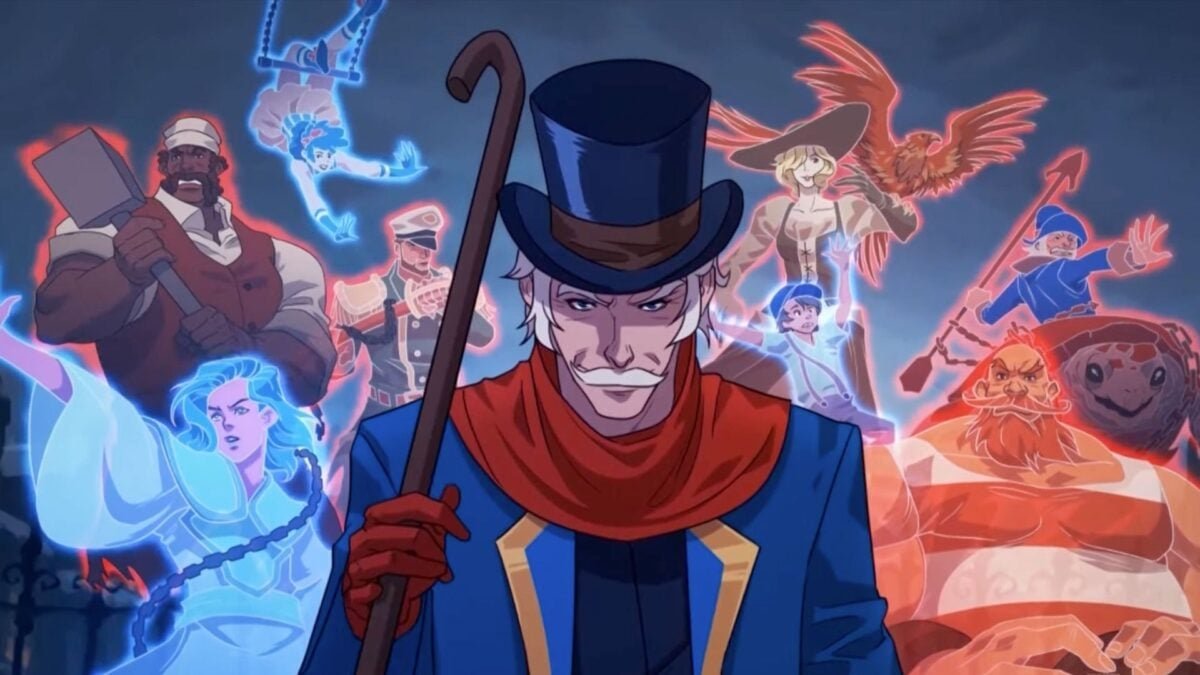I was actually excited to play Ebenezer and the Invisible World. When I first saw the trailer for it, I thought, “Well if they can make Pinnochio into Dark Souls, there’s no reason they couldn’t make A Christmas Carol into Metroid.” After playing Lies of P, all I want in this world is more interesting game adaptations of classic literature.
However, much as I’ve lamented before, this is the double-edged sword of the indie sphere—sometimes you find gems and other times you get pieces of coal. Ebenezer and the Invisible World is definitely in the latter category and highlights how a lack of experience can really affect a game, especially when approaching something as intricate and particular as a Metroid-like.
Ebenezer and the Invisible World makes its first mistake with its story. Typically, a Metroid-like only delivers minimal story as a way of establishing the brutal, desolate world the player is about to embark upon. The game opens with a dreadfully long explanation of the wealthy industrialist Caspar Malthus, who, like Scrooge, was visited by the three Ghosts of Christmas in the hopes that they might change his cruel heart.

However, the Ghost of Christmas Future unintentionally shows Caspar a glimpse of a power source he spent his whole life trying to create—just before he dies and drops the device, shattering it—and Caspar becomes even more convinced he must create it and achieve his lifelong dream of decimating the working class with automation. It’s not a bad story, albeit a bit uninspired since it’s just “What if A Christmas Carol without the lessons,” but it’s delivered in such a boring way.
“Ebenezer and the Invisible World is an interesting idea buried inside a lamentable game.”
Ebenezer and the Invisible World must have really wanted to evoke the spirit of the Dickins novel since it gives you a long, unvoiced “cutscene” that’s just blocks of text that often don’t stay on the screen long enough to read. After that, the game stops you constantly with characters and side-quests, and it never really lets the player experience the world. The main hook of a Metroid-like is exploring, essentially, the skeleton of a world and letting the player piece certain things together. Even modern Metroid-likes, such as Hollow Knight or Metroid Dread, allow the world to speak more for itself, while characters and lore bits add small bits of meat to the bones.
Not that Ebenezer and the Invisible World has a world worth exploring anyway. So much of the game takes place on the streets of London, and as a result, many of the environments are somewhat uninspired and lack a degree of depth and intricacy. When I first arrived at the infamous Bedlam Insane Asylum, I was expecting winding paths punctuated by a dark, sinister atmosphere. But it, much like most of the game’s areas, was so linear and boring that I quickly began to tune out, and my desire to explore faded fast.

This isn’t helped by the game’s lacklustre combat and often frustrating design. Combat is not dissimilar to Castlevania: Symphony of the Night, insofar that you start with a pretty ineffectual melee attack and a backstep. Most enemies just potter around until they telegraph an attack to backstep from and go in for some quick hits. Other enemies throw out their attack so fast that dodging is nigh impossible, or hover around before quickly diving towards you, so there’s no real strategy to approaching enemies. Just jump and slash and hope for the best.
While you do begin to unlock new abilities and weapons, the game is so dreary that I can’t imagine anyone wanting to stick around long enough for that to even matter. The combat isn’t really designed around the exploration in the same way it is in better examples Metroid-likes, it’s all so unpolished and uninspired that every time I tried to play it, I quickly turned it off out of frustration.
Furthermore, it performs terribly on the Switch, which contributed a lot to my lack of desire to play. The background stutters weirdly when Ebenezer moves, alongside occasional framerate dips; there was a strange moment when I hit an invisible wall, and a strange block was present ahead of me, and while I never experienced it, there have been reports of multiple crashes on the Switch version.
Also, there’s a certain amateurishness to the affair with weird animation frames, HUD text that is way too small to see—especially in handheld—and there are no options to increase it, and this may be a nitpick but it bothered me, but the Joy-Con vibration in the is so intense, and turning it off in the options actually doesn’t work.
“Combat is not dissimilar to Castlevania: Symphony of the Night, insofar that you start with a pretty ineffectual melee attack and a backstep.”
If I can say one thing positive about Ebenezer and the Invisible World it’s that it has an incredible visual style. Utilizing and hand-drawn style that makes the whole world feel like a classical painting come to life. From the soft blues and whites of the snow-covered streets of London at night to the bright reds and oranges of the lava-filled corridors of Caspar’s factory, this game, while dreadful to play, is a delight to look at. Also, it’s one of the few games set at Christmas time, and the use of Christmas imagery really sets it apart from any other game.

Ebenezer and the Invisible World is an interesting idea buried inside a lamentable game. Its outdated and outright amateur design makes the game annoying at best and unplayable at worst. Perhaps Scrooge’s next adventure should stay relegated to a cartoon duck.





